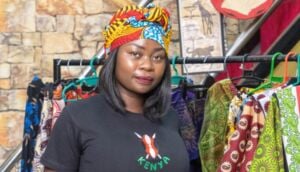Carole de Bazignan, Antenna Technologies, May 2014
As stated by Urs Heierli, economist and director of msd consulting (www.poverty.ch), reality is such that very few success stories have emerged so far and BOP marketing is a very demanding task: to design products and services that poor people can afford is not easy and to setup supply and delivery mechanisms that can keep the costs low and still allow for profits is almost as big a challenge as squaring a circle.”
Indeed, this is not an easy task, but what if some organisations had identified key sales activities, which, combined with innovative marketing and financing models, effectively reach the base of the pyramid? Let’s dig further into this.
Making the product cheap is not the solution: risk-free investment is more convincing
“If you make a product for the poor, neither the poor nor the rich will buy. What you need is to make a product for the rich that also the poor want to buy and can afford.” Nassir Khawaja, shop owner in Rawalpindi.
Hydrologics, based in Cambodia, has understood the necessity to mix marketing and social marketing, so as to sell products which may not be the cheapest one, but are seen as risk-free solutions for the clients who surprisingly enough, are ready to pay 70% more because the Super Tunsai filter is available through micro-credit. Clever, isn’t it?
Some 780 million people lack sustainable access to safe drinking water sources, resulting in water-borne diseases. Because the supply of safe drinking water is essential to enhance sustainable growth in developing countries and reduce poverty, continued collective efforts by the public and private sector are necessary.
A study published in January 2008 by the UNICEF show that household-based interventions (HWTS) were about twice as effective in preventing diarrhoeal disease (47%) than improved wells, boreholes and communal stand pipes (27%).
However, most HWTS products only reach 25% market penetration. This is a big failure, especially because these 75% are most likely the poorest and most vulnerable population. So, how do we convince these?
Use wannabe messages, not mustdo’s
Private structures or social entreprises focusing on selling WASH products have to find the right incentives to trigger the purchase of the product by customers who may have a lot of other priorities than buying household water treatment options. TARA, the commercial arm of Development Alternatives, an Indian based company, has not come up with the right promoting flyer from scratch. They worked with a market survey consultant to identify which factor would be crucial and important to create the best communication material and tried several flyers before finding the argument that would result in extending their sales. Thanks to the adoption of a low-cost electro-chlorinator, the WATA device, their filling machine and the sealing device, they are able to produce 100,000 flasks (50 ml) of chlorine per month, to supply different organisations and promote their product Aqua +.
IEC material from DA
Reaching the BoP will rather work through positive word of mouth, sometimes more powerful than a national TV campaign. The BoP is acquired one village at a time. In India, SpringHealth which has spread out the business models on using existing village shops (Kirana shops) and built a 1,000 to 3,000 litres water tank to sell chlorinated water as a service. At the end of 2013, the social enterprise selling safe water in branded designed 10 L jerry cans is present in 173 villages with 87,000 clients.
Why did SpringHealth have so much success with their kiosks providing home delivery of safe water? The project has introduced “water testing melas” (water testing village fairs) where the community could bring their water for testing. Almost everybody was shocked when they saw the results of the analysis and wanted to buy. However, the fact that the delivery boy still had another job and did not deliver immediately was enough for the people to accept the old behaviour and have an excuse not to switch over to the new habit. This shows that social marketing and marketing activities must go hand in hand, otherwise every action for awareness creation goes up in smoke.
Becoming sustainable is a matter of good margins which are easier to get using existing supply chains. SpringHealth has shown that it is possible to use existing village shopkeepers as distributors for safe water, adding to their existing product range of all kind of grocery products.
In the WASH sector, we have come to the conclusion that engineers have done their job and developed technologies that have proven to work and solve the problem of water-borne diseases. It is now a matter of having marketers looking into these products and promoting them in a way that they will enhance BoP’s social status to trigger the purchase, reach high numbers, making them sustainable.










